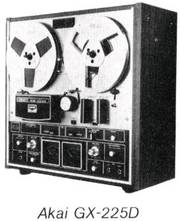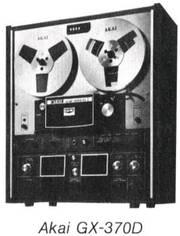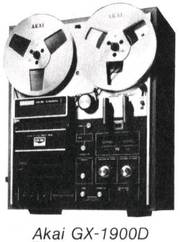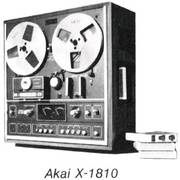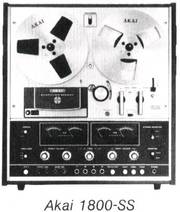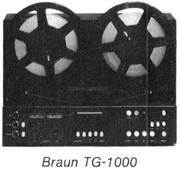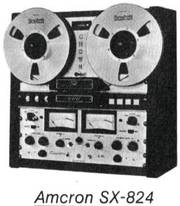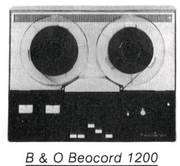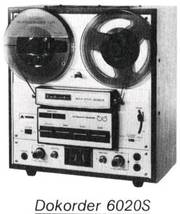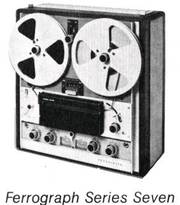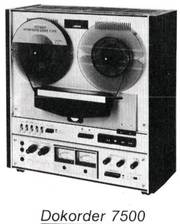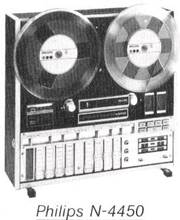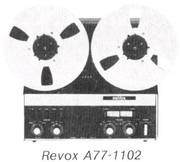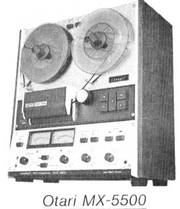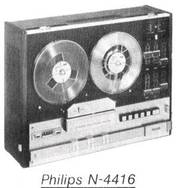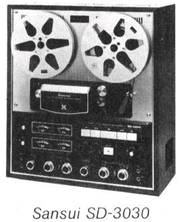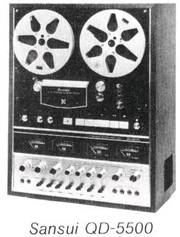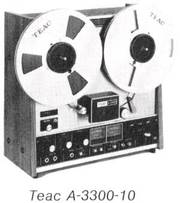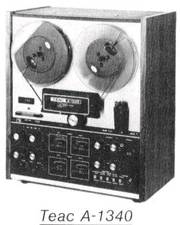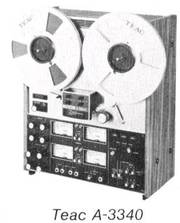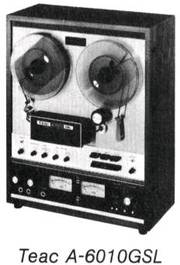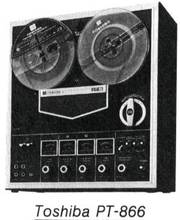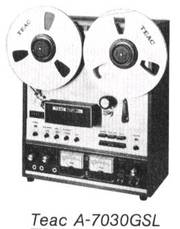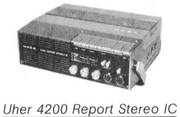"off duty" 1970 - 1997 - eine Freizeit-Zeitung für's US-Militär
Die in diesem amerikanischen (Freizeit-) Shopping-Magazin angepriesenen Hifi- und Video-Produkte waren auschließlich amerikanischen und kanadischen Militärangehörigen zugänglich - also zu kaufen - und vor allem zu ganz ungewöhnlich (verblüffend) niedrigen US $ Military-Preisen. Zu der einführenden "off duty" Seite geht es hier lang. - Um 1970 begann der weltweite Hifi-Boom bis zum 1. Crash 1978 und dann wieder zum 2.Crash um 1990. Über die 20 Jahre nach 2001 lesen Sie mehr in den Kolumnen auf diesen japanischen Seiten.
.
Die open reel Bandgeräte für den Military Markt
Das ist die zweite Marktübersicht (die erste Übersicht aus 1972 beginnt hier) von großen Spulen-Tonbandgeräten für den europäischen und asiatischen Militärmarkt. Das muß wieder mal betont werden, denn viele Firmen haben diesen Militarymarkt der Spulenbandgeräte bereits abgeschrieben. Keine der deutschen bzw. europäischen Firmen war dort sonderlich erfolgreich, weil allermeist nur die jungen GIs adressiert waren. Und die wollten groß, prozzig und billig haben. Und das war die Domäne einiger Japaner, allen voran AKAI und TEAC. SONY scherte von Anfang an aus dieser Riege aus und setzte auf Qualität und amerikanischer Optik.
Weiterhin ist hier zu erkennen, daß der amerikanische Markt für LowCost Tonbandgeräte wie unserer Grundig TK14 bis TK 23 oder die 3M Wollensak Geräte schon 1972/73 eingebrcochen war und die etablierten hersteller wie AKAI und TEAC noch dickere und noch größere Boliden entwickelt haben und als Serie aufgelegt hatten. Auch sind einige Newcomer dabei, die bislang nie Bandgeräte angeboten hatten wie zum Beispiel Sansui und Pioneer und auch Onkyo.
.
"The Turning Point"
Grundsätzliche Überlegungen
Is this the year when open-reel tape recorders start losing ground?
Off Duty / Europe / August 1973 - by THOM PRINGLE
Wo können "open reel" Recorder überleben ?
THE CURRENT QUESTION in 1973 for open-reel tape recorders is not a question of survival, but a question of where to survive. For many years, open-reel was the only worthwhile hi-fi tape format and any sales gains made by new tape formats, such as cassettes and cartridges, were made in segments of the market where open-reel had never actually been.
Later, as the quality of cassette units increased, so did the threat to open-reel sales. Today, cassette units offer first-generation quality which is so good that even the best trained ears can't detect serious flaws.
Anmerkung : Das ist natürlich erheblich übertrieben. Selbst eine Laien kann man vorführen, wie groß der Qualitäts-Unterschied von 1973er CC-Recordern gegenüber iene Revox A77 oder SONY TCX-854 war und ist. Erst zum Ende der 1970er Jahre wurde dieser Unterschied kleiner.
.
The turning point has arrived.
In taking our August 1973 survey of open-reel machines "available to the military market", therefore, we were not surprised to find that several of the largest names in the audio business were no longer interested in selling open-reel tape units.
This, then, is the wash-out period - the time when firms which do not have to rely on open-reel sales for their existence will leave the market and it is a time of tremendous competition for those firms which are already on top or which have decided to stick in there and fight tooth-and-nail for the diminishing market.
All of this is interesting, since it explains why some of your favorite brands are not contained in this SHOPPER, but it doesn't help you very much in making your decision about what kind of tape unit to buy.
Any audiophile worth his salt wants to be able to do his own recording and, quite simply, this means he must have some type of magnetic-tape record/ playback system. Choosing between the two major systems for a flexible, high-quality home system (8-track cartridge just doesn't seem to be in the running, right now - maybe when 8-track quality improves...) can be a genuine trial for the audiophile. Now that development of the cassette has reached what looks like a stable plateau for a while, however, there are definite criteria which you can use for guidance in making your choice.
What do you want to do with the tape ?
First, and probably most important, is to determine whether you intend to make only first-generation recordings. That is, will you record something from a record or broadcast and be satisfied with simply playing that recording back for listening purposes (first generation) or do you want to re-record that material again to a second or third machine (multiple-generation)?
If you can be satisfied with first-generation work, then cassette tape recordings will be adequate. If you want to play around with your recordings, however, it is recommended that you give serious consideration to open-reel machines.
Another important factor is the length of the recordings which you want to make. If you like opera, for instance, and want to record unbroken performances without entrusting a valuable recording to the molecule-thin, ultra-long cassette tapes, the only answer for you is open-reel recording.
Beispiele
As an example, you can choose an open-reel machine with a 10 1/2" reel capacity and automatic bidirectional playback and have almost six hours (at 3 3/4 ips) of reliable, high quality reproduction without interruption.
There are some other smaller factors to consider, including editing (which completely rules out cassette units) and 4-channel capability. In the case of 4-channel, you can, of course, matrix 4-channels onto the two channels that cassette units offer, but for discrete 4-channel operation you're almost forced to opt for open-reel, even though some exotic discrete 4-channel cassette units have been announced.
If, by now, you've decided you're still interested in those impressive open-reel units, the kings of tape recording, here are some further factors you'll want to remember when making your final choice.
Our topics :
.
Special features.
For many audiophiles the special features offered by a model make all the difference in the world between it and other models.
.
Synchronized record/play.
Here is a feature designed for the person who wants to do some really serious recording. It allows him to switch various tracks of the record head to the play mode thus giving the capability of recording on one track in perfect synchronization with whatever track (or tracks) is being monitored.
It's the exact same technique used by all the leading recording studios to produce low-noise first-generation multi-track recordings. In the consumer market this feature is known by a variety of names such as Simul-Sync, Sel-Synch and Synchro-track, and is available on several of the new machines.
Remember, though, that probably even the most ardent audio buffs will find little use for this complicated feature, so make sure you understand it thoroughly before you decide to invest in it.
.
Dolby system.
The Dolby noise reduction method now seems to be the generally accepted system by most major manufacturers. But, in spite of the system's popularity, it is still not found as a standard built-in feature of more than a few open-reel decks.
Unlike cassette units, open-reel recorders do not suffer from exceptional amounts of noise and, therefore, can perform quite well without dynamic noise limiting. Nevertheless, the noise they do produce can be dramatically reduced by the addition of Dolby processing.
The few machines now available with built-in Dolby circuits boast signal-to-noise ratios in the high 60s and you can except the number of these machines to increase as Dolby IC circuits become more readily available. Of course, there are many add-on Dolby units available, too, so this does not have to be a crucial factor in your buying decision.
Transport control. (Laufwerkssteuerung)
The trend in the latest top-of-the-line machines is toward completely electrically controlled transport functions. This means that the machines are controlled through a combination of relays and solenoids (relay/solenoid control) and the control buttons on the machine have no mechanical linkages. This allows complete remote control whereas mechanical controls or simple solenoid controlled units may not have this capability.
.
Frequency response.
This is one of the measurable parameters which you should take into consideration when selecting a recorder. Many units today can deliver a record-playback response of 30 to 20,000 (20k) Hertz (Hz) with variance limits of plus or minus three decibels (±3 dB). Needless to say, this is excellent performance, and if the recorder you're considering has a frequency response close to this, you can be assured that it will deliver hi-fidelity sound. The frequency response figures given in our listings are for a tape speed of 7/2 inches per second (ips) unless otherwise noted.
.
Signal-to-noise ratio.
Because of the natural character of tape, noise has always been a big problem in tape recording. Compared with a standard signal level, this noise is expressed in a signal-to-noise (S/N) ratio such as 50 dB.
S/N ratios have steadily improved (gotten higher) over the past few years - they were commonly in the high 40s but now it's not unusual to find machines with S/N ratios of 60 dB even without special noise reduction circuitry. With careful use of a recorder, low noise tape and Dolby noise reduction circuitry, today's audiophile can expect S/N ratios of 65 to 70 dB.
The importance of low noise (high S/N ratio) is even greater if you plan to do a lot of dubbing or secondary recording. Every time you rerecord a piece of material you add the noise generated in the recording process to whatever previously existed.
Therefore, after several dubs, the noise level may be objectionably high and it's for this reason that major recording studios developed the synchronized playback/record technique. When selecting a recorder, your lower limit for a S/N ratio should be 50 dB and, of course, as much higher than that as possible. Some of the small portable or inexpensive machines may not be able to meet this limit, but most of the quality stereo units listed will pass the test easily.
.
Flutter and wow.
To measure the stability of movement in a recorder's mechanism, manufacturers measure the amount of average deviation and express it as a percentage called flutter and wow. The idea is to have as little flutter and wow as possible since it has a definite and adverse effect on sound quality.
As with other parameters, manufacturers have made great progress with flutter and wow. Here again the trend toward super specifications is evident, with flutter and wow figures for home recorders being almost a third what they were just a few years ago. While a flutter and wow figure of 0.1 5 to 0.20 per cent (at 7/2 ips) used to be normal, now it is not unusual to find units with as little as 0.07 per cent.
All of which means that home machines of this caliber are quite professional in quality. When selecting your recorder look for flutter and wow figures under 0.15 per cent and, even better, under 0.10 per cent when possible.
.
Heads.
The heads on any tape recorder are tremendously important and very tricky devices since this is where mechanical and electrical activity merges. Not only do the heads have to be extremely well designed, but they must be held in an absolutely rigid predetermined position.
Construction of magnetic-recorder heads has received a lot of attention from manufacturers with the result that many machines now have long-wearing special ferrite heads as standard equipment. These new heads have the same basic construction as previous heads but are made with high density ferrite materials which wear much longer than conventional heads. In some cases, glass coatings are also used with the ferrite for added durability.
The number of heads in your recorder may be important to you, but in some cases is difficult to determine. If your machine is designed for playback only, it will probably have only one head.
If it is designed for record and playback then it will probably have at least two heads - one for erase and one for recording and playback. On the other hand, if it has three heads, it will probably have separate record and playback heads, giving the advantage of reduced switching and providing tape monitoring during recording. If the machine is a bidirectional model it will probably have more heads - up to six in all - to take care of the additional functions.
Some manufacturers are using multi-heads to save space. These are heads which have more than one core group mounted in one case - actually two heads (such as erase and record) in one. Therefore, a machine which appears to have only two heads may really qualify to be a three-head machine. And, finally, there is the crossfield bias head which is used only during recording to apply the bias signal but which is not usually included in the number of heads credited to a machine.
.
Motors.
The current trend is toward three-motor transports. This provides one motor for each reel and a separate (usually hysteresis synchronous) motor to drive the capstan. One major advantage of this type transport is that it eliminates the need for various complicated mechanical arrangements such as gears and belts. The three-motor system also is usually controlled with solenoids and relays which, while it may cost more, offers the recordist definite advantages.
Other transport features. There are many other features offered on tape recorder transport which are perhaps not standard nor new and which vary from manufacturer to manufacturer.
.
Chassis.
More and more models are using a rigid cast frame as the basis for their machines, having realized that durability is essential for long-term quality performance. A cast metal frame can hold the heads, motors and accessory components in perfect alignment, whereas a thin gauge plate or multi-piece chassis cannot guarantee to do so.
.
Vertical operation.
It's rare to find a unit today which cannot be operated in the vertical position. Almost all have some kind of reel locks to hold the reels in position during operation.
.
Bidirectional operation.
There is a wide selection of machines, today, with automatic bidirectional operation. Some can only playback in both directions while others can record and playback. In either case, the transports are usually controlled by a bit of foil attached to the recording tape and will continue to run a tape back and forth as long as you wish. Or they can be programmed to make just one reverse and then stop after both sides of the tape have been played. These machines are usually more complicated and a bit more expensive, which has to be taken into consideration when buying your recorder.
.
Automatic fast reverse.
A few machines are provided with an automatic fast reverse mode which automatically rewinds the tape at the end of the reel and may also have a provision for playing the tape repeatedly.
.
Cue mode.
This feature is not found often on hometype machines since audiophiles have little occasion to do precision cuing. But, in the machines which do have it, it consists of an arrangement whereby the tape is held against the head when the machine is not in operation so that you can locate selections by manipulating the reels by hand.
.
Bias.
The bias frequencies being used in modern recorders are all satisfactorily high enough that there is little point in studying the matter. A few manufacturers are providing bias adjustments on the front panel of their machines - you may be interested in this if you intend to use tapes which require different bias levels.
.
Special effects.
In addition to the synchronized record/playback feature, some manufacturers include sound-on-sound and sound-with-sound circuitry into their machines. These circuits allow you to take material which is on one track and mix it with new material to be recorded on a second track or to record on a second track in approximate synchronization with the first track. While these circuits are not as sophisticated as the synchronized record/play circuit, they are still meant for the individual who intends to do a fair amount of recording work.
.
Connections. (Cinch und/oder DIN Buchsen)
Almost every machine has connections for line inputs and line outputs. Most of the European machines will use the DIN-type jacks exclusively, while the other machines will have a variety of phono-pin jacks, DIN jacks and phone jacks. In any event, the irritation in having to adapt from one type plug to another is usually small and short-lived, so it is little problem in your selection process.
.
.



